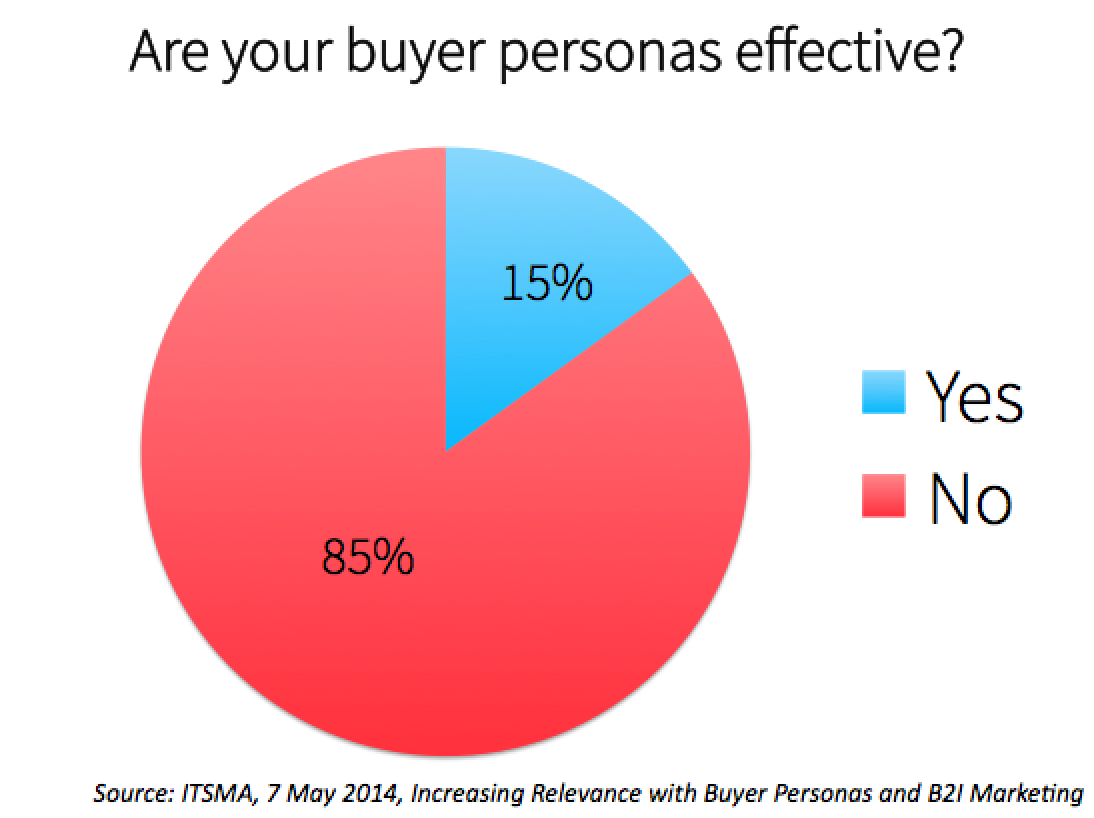If you’re in content marketing, you’ve probably been told you have to create buyer personas for your content to really make an impact. You have to know who you’re writing for, what those people care about, and how they’ll move through the buyer’s journey in order to get the right content in front of the right person at the right time.
Easier said than done, right?

If you’ve been struggling to define or refine your buyer personas, you’re not alone. According to a survey by ITSMA, 85% of B2B marketers believe they’re not using the buyer personas they created effectively.
That’s a huge percentage! Creating buyer personas is not an easy task – and for them to then go unused is a massive missed opportunity.
Luckily, there are a ton of experts in the field of buyer persona development that offer valuable, actionable advice for improving the creation and use of those buyer personas.
Don’t be part of the 85%.
Build buyer personas you’ll actually use with these best practices from experts in the field.
Make it Real
In order for the buyer personas you develop to be really effective, they have to “feel like a real person,” says Dayna Rothman of Marketo. “Create dossiers on each one, hang posters or cutouts around the office. You can even write a blog for each persona and make it come to life even more.” The team over at Pardot actually made real, life-size models of their buyer personas to create a physical presence of the buyer in their offices.

Key to this process is that the persona is a real person, not a representation of a target company or industry. Here’s more on that from Kevin Cain for Convince and Convert: “Your goal is to identify your customers’ most obvious and important characteristics, bearing in mind the need to focus on the actual people, not the companies they work for.”
Don’t Make Assumptions
The first step toward achieving reality with your buyer personas is to put in the time to research and interview your real customers and prospects. “Making it up” is on almost every list of common buyer persona mistakes for a reason: you can’t see reality through the fog of fiction.
Adele Revella is one of the foremost experts in the field of buyer personas, founding and overseeing the Buyer Persona Institute and authoring The Buyer Persona Manifesto. Here’s her reasoning for why marketers shouldn’t play guessing games with their personas:
“It’s only through a real-time dialogue, through listening to each buyer’s story and posing questions based on their answers, that you can ferret out new insights: What triggers the buyer’s engagement, his barriers to purchase, or which criteria the buyer uses to evaluate competing solutions – to name just a few of the insights that actionable buyer personas reveal.”
Kerry Butters, writing for Positionly, adds, “Many people make the mistake of using too much guesswork. A buyer persona should be based on data if it’s going to be successful and whilst a certain amount of educated guesswork can take place, it’s always dangerous to make assumptions.”
While developing robust buyer personas isn’t just about interviewing customers, it is the only way to collect the unique, valuable perspectives your salespeople or customer success team might miss.
Catalog Pain Points
Why do we create buyer personas? What’s the point?
For B2B marketers especially, the goal is to know our audience so we can offer them the right materials at the right time to move them toward a sale. And salespeople can tell you – closed deals live and die on pain points.
For your buyer personas to be actionable and powerful, Charles E. Gaudet II recommends “Find out what problems your ideal customer is experiencing. What challenges are they facing and what results would they like to achieve?” Heading into a sales call armed with this kind of buyer persona helps salespeople build a deeper connection with prospects and help solve their problems.
Persona expert Tony Zambito agrees: “Understanding the gaps buyers have in fulfilling goals is at the heart of buyer personas. These gaps also should connect to solving a problem statement.” As marketers, our products and services fill these gaps for our buyers. Figuring out if the gap experience by a prospect is the same gap we fill is a big part of why we design buyer personas in the first place.
Finally, Adele Revella reiterates that it’s not just about determining if pain exists – it’s about understanding what’s motivating your buyer to solve that pain. She says, “You want to understand the personal or organizational circumstances that cause your buyers to allocate their time, budget, or political capital to resolve the pain.”
Ready to Get Started?
Developing a strong, effective buyer persona isn’t easy – but putting in the work can reap dividends for your marketing programs. Focusing on real people, researching through real conversations, and identifying the pain points your prospects face will put you well on your way to nailing down your personas and collecting characteristics that make a difference.
Don’t be part of the 85%! Take action today and build buyer personas that matter.
Want more marketing fundamentals? Join our Marketing Bootcamp today!
This post was originally published on the SnapApp blog.